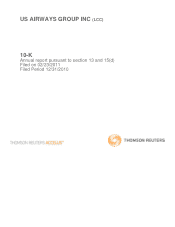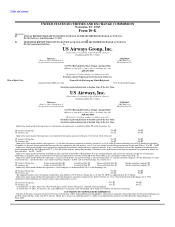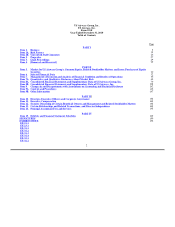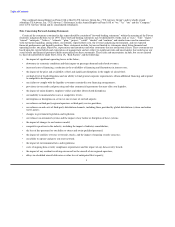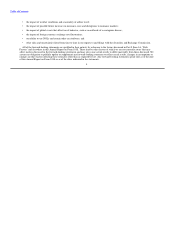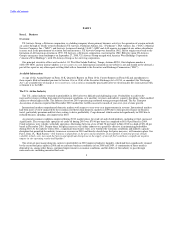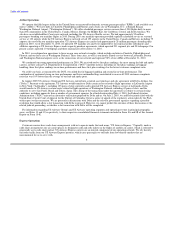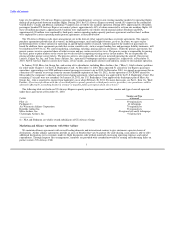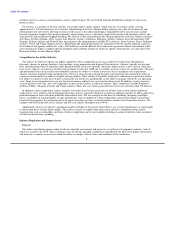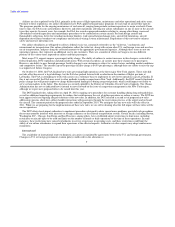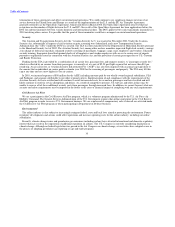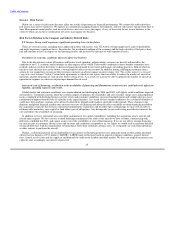US Airways 2010 Annual Report Download - page 6
Download and view the complete annual report
Please find page 6 of the 2010 US Airways annual report below. You can navigate through the pages in the report by either clicking on the pages listed below, or by using the keyword search tool below to find specific information within the annual report.
Table of Contents
PART I
Item 1. Business
Overview
US Airways Group, a Delaware corporation, is a holding company whose primary business activity is the operation of a major network
air carrier through its wholly owned subsidiaries US Airways, Piedmont Airlines, Inc. ("Piedmont"), PSA Airlines, Inc. ("PSA"), Material
Services Company, Inc. ("MSC") and Airways Assurance Limited ("AAL"). MSC and AAL operate in support of our airline subsidiaries
in areas such as the procurement of aviation fuel and insurance. US Airways Group was formed in 1982, and its origins trace back to the
formation of All American Aviation in 1939. US Airways, a Delaware corporation, was formed in 1982. Effective upon US Airways
Group's emergence from bankruptcy on September 27, 2005, US Airways Group merged with America West Holdings Corporation
("America West Holdings"), with US Airways Group as the surviving corporation.
Our principal executive offices are located at 111 West Rio Salado Parkway, Tempe, Arizona 85281. Our telephone number is
(480) 693-0800, and our internet address is www.usairways.com. Information contained on our website is not and should not be deemed a
part of this report or any other report or filing filed with or furnished to the Securities and Exchange Commission ("SEC").
Available Information
A copy of this Annual Report on Form 10-K, Quarterly Reports on Form 10-Q, Current Reports on Form 8-K and amendments to
those reports filed or furnished pursuant to Section 13(a) or 15(d) of the Securities Exchange Act of 1934, as amended (the "Exchange
Act") are available free of charge at www.usairways.com as soon as reasonably practicable after we electronically file such material with,
or furnish it to, the SEC.
The U.S. Airline Industry
The U.S. airline industry returned to profitability in 2010 after two difficult and challenging years. Profitability was driven by
increased revenues resulting from improved economic conditions, new ancillary revenues and industry capacity discipline, which enabled
airlines to obtain higher yields. The industry closed out 2010 experiencing continued strong passenger demand. The Air Transport
Association of America reported that December 2010 marked the twelfth consecutive month of year-over-year revenue growth.
International markets outperformed domestic markets with respect to year-over-year improvements in revenue. International markets
had been more severely impacted by the economic slowdown than domestic markets in 2009 due to their greater reliance on business
travel, particularly premium and first class seating, to drive profitability. Cargo demand, which contracted significantly in 2009 due to
reduced business spending, also improved in 2010.
As general economic conditions improved during 2010, market prices for crude oil and related products, including jet fuel, increased
significantly. The average daily spot price of crude oil during 2010 was $79.48 per barrel as compared to $61.95 per barrel in 2009.
Crude oil prices were volatile, with daily spot prices fluctuating between a low of $64.78 per barrel in May 2010 to a high of $91.48 per
barrel in December 2010. Despite these fuel price increases, the airline industry was generally effective in maintaining profitability
during 2010. As the industry enters 2011, a significant uncertainty exists as to whether the economic conditions and industry capacity
discipline that permitted the industry to increase revenues in 2010 and thereby absorb large fuel price increases, will remain in place. See
Part 1, Item 1A, "Risk Factors – Our business is dependent on the price and availability of aircraft fuel. Continued periods of high
volatility in fuel costs, increased fuel prices and significant disruptions in the supply of aircraft fuel could have a significant negative
impact on our operating results and liquidity."
The return of most major domestic carriers to profitability in 2010 improved industry liquidity, which had been significantly strained
by the record fuel price spike in 2008 and recessionary business conditions in late 2008 and 2009. A continuation of these trends is
dependent on, among other things, continued improvement in economic conditions and the ability of the industry to pass through
increased costs, including increased fuel costs.
5

